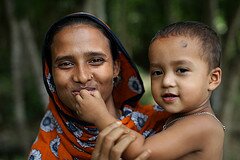Hackathon: Women’s Empowerment & Nutrition
Here’s Challenge #2 for today’s Hackathon:
As we begin to explore years of data on women’s empowerment from the World Bank and United Nations, we want to ask the question: Do countries that significantly improve the status of women also see lower rates of stunting? Women are the primary caregivers in the family. Research from countries around the world has shown that when women are empowered to earn more and have a greater say in home finances, they are more likely than men to invest the additional money in promoting the welfare of their children — through nutritious food, for example. In this project, Bread for the World Institute is interested in exploring whether and where women’s empowerment is associated with improvements in stunting and, if so, over what period of time. The answer to the question of whether the two indicators coincide is most likely to be “sometimes yes, sometimes no.”
Data and background information can be found in the “Challenge 2″ in this Google drive folder.
Cleaned Female Stunting Data (updated)
Cleaned Male Stunting Data (updated)
Final Cleaned Full Data (updated)

Anxious to dig in with this great group. Let’s go!
We are exploring this data set in addition to the ones in the Google Drive: http://www.hancindex.org/
Exploring this scatterplot is getting our visualization brains moving: http://notes.bread.org/2014/06/country-commitments-to-fighting-hunger-and-malnutrition-again-ranked.html
Correlations between women’e empowerment indicators and wasting/severe wasting among children across countries using Worldbank data from 2004-2013.
This group is heading down the road of correlations between health measures (stunting, undernourishment, underweight, mortality) and women’s empowerment (Gender Inequality Index, GII).
So here’s the data cleaning challenges:
–GII data is not machine readable
–lots of missing data in the World Bank files. We are considering moving averages or some other sort of smoothing
–possible secondary data set that shows the variation within country over time to visualize the point above.
Data for THE STATE OF THE WORLD’S CHILDREN 2014 (SOWC) – Nutrition
https://drive.google.com/file/d/0B-2kvku-FltvclRCQm9wYkdLQkE/edit?usp=sharing
Also available at:
http://www.unicef.org/sowc2014/numbers/#statistics
We are sorting into teams: 3 separate teams working on data, to pull it into one major master file; another team starting to sketch data visualization ideas.
More GII data, over time
https://data.undp.org/dataset/GII-Gender-Inequality-Index-value/bh77-rzbn
We’ve started down the road of one–or multiple–scatterplots or bubble charts to visualize the data.
We’re now churning through another set of ideas of a graphic/infographic-type approach that shows the story in a different way. This could potentially be a timeline of a woman’s life, or visual images of stunting, malnutrition, etc.
Rough graphic conception.
Code for cleaning up stunting data:
https://github.com/khughitt/helpmeviz-womens-empowerment
Found a table with Country -> Region mapping:
https://github.com/okfn/iatitools/blob/master/mapping/ISO-DAC-Countries-Regions.csv
There is now a revised Github repo with revised and cleaned data and a couple of visualizations available here: https://github.com/khughitt/helpmeviz-womens-empowerment